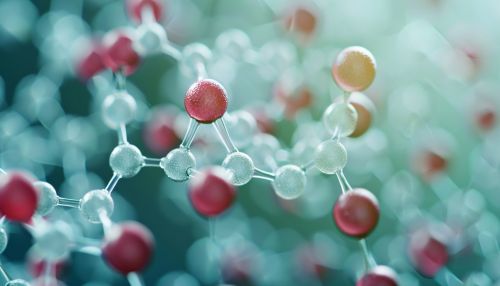L-aspartate
Overview
L-aspartate, also known as aspartic acid, is one of the 20 amino acids that are used in the biosynthesis of proteins in living organisms. It is a non-essential amino acid, meaning that it can be synthesized by the human body and does not need to be obtained directly from the diet. L-aspartate plays a crucial role in various metabolic processes, including the citric acid cycle, neurotransmission, and the synthesis of other amino acids, nucleotides, and proteins.


Structure and Properties
L-aspartate is a white, crystalline powder with a slightly acidic taste. It is soluble in water and insoluble in ether and ethanol. The molecular formula of L-aspartate is C4H7NO4, and its molecular weight is 133.10 g/mol. It has two functional groups: an amino group (-NH2) and a carboxyl group (-COOH). The presence of these functional groups gives L-aspartate its characteristic properties and functions.
Biosynthesis
In the human body, L-aspartate is synthesized from oxaloacetic acid via a transamination reaction. This reaction is catalyzed by the enzyme aspartate transaminase, which transfers an amino group from another amino acid, typically glutamate, to oxaloacetic acid, producing L-aspartate and alpha-ketoglutarate.
Metabolic Role
L-aspartate plays a significant role in several metabolic pathways. It is a key intermediate in the citric acid cycle, a series of chemical reactions that generate energy through the oxidation of acetate into carbon dioxide. In the citric acid cycle, L-aspartate is converted into fumarate via the enzyme aspartate aminotransferase.
In addition to its role in energy production, L-aspartate also serves as a precursor for the synthesis of other amino acids, including methionine, threonine, and isoleucine. It is also involved in the synthesis of nucleotides, the building blocks of DNA and RNA.
Neurotransmission
L-aspartate is one of several amino acids that serve as neurotransmitters in the central nervous system. It is an excitatory neurotransmitter, meaning that it promotes the firing of neurons. L-aspartate binds to specific receptors on the surface of neurons, triggering an influx of calcium ions into the cell and leading to the generation of an electrical signal.
Health Implications
While L-aspartate is generally considered safe and beneficial, excessive amounts can be harmful. High levels of L-aspartate can overstimulate neurons, leading to excitotoxicity and neuronal damage. This has been implicated in several neurological disorders, including Alzheimer's, Parkinson's, and amyotrophic lateral sclerosis (ALS).
Dietary Sources
As a non-essential amino acid, L-aspartate can be synthesized by the body and does not need to be obtained from the diet. However, it is also found in a variety of foods, including meats, dairy products, and grains. Some dietary supplements also contain L-aspartate, often in the form of magnesium aspartate or potassium aspartate.
